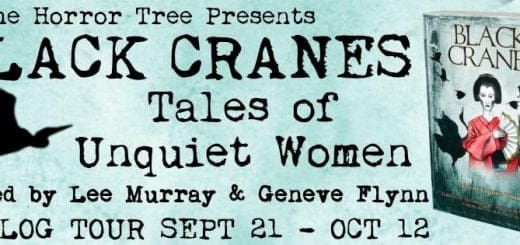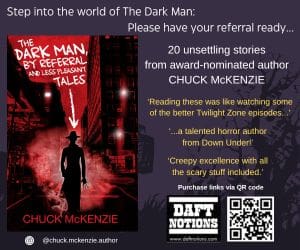WIHM: How women writers shaped Gothic Literature

My horror story tendencies began in the 90s with Tim Burton. To be very specific, it started with my young and tiny self calling out “Beetlejuice” three times and waiting for him to show up. It was followed by a crush on Edward Scissorhands (played by Johnny Depp, so can you blame me?) and from then on it was downwards into the hellish gates of the horror genre. But have you ever wondered where and how it all began? Well, grab yourself some popcorn, here is a story for you.
In the late and gloomy 1700s, an English guy named Horace Walpole decided to write a book. For starters he was obsessed with everything medieval, and than he was rich enough to have his own printing house. How rich, you ask? He had his own castle and redecorated it in a Gothic fashion, which still stands to the day, known as Strawberry Hill (yes, I know, sounds more like a reality show, but bare with me, here).
So the term “Gothic” was first used in architecture meaning medieval or “medieval like”, the Notre Dame Cathedral is probably the most well-known example of Gothic architecture. Horace Walpole was the first to use it literature, though, and the first to write a novel with medieval elements, which didn’t just include the setting, but a good amount of superstition and supernatural events. In 1764 he published “The Castle of Otranto: a Gothic novel”. That being said, it brings us to the end of ‘Mr. Walpole appreciation post’, now let’s get down to business.
Ladies and gentleman, I give you, the ones picked up the baton and carried on with the Gothic novel, shaping it into a whole new genre, you guessed it: the ladies. In 1778, Clara Reeve, publishes “The Old English Baron”, which she herself called “an offspring of The Castle of Otranto”. To lay it plainly, as much as I loved Walpole’s novel, it was short and full of plot holes. Reeves attempted to rewrite, mend, but also bring in a more realistic perspective to the events, even if they are of a supernatural nature, she attempted to write them in a light that seems plausible to the reader when taking into account the world created in the novel. That, my friends, is what we call Gothic literature, which at this point consists of: a castle that has seen better days, a story that takes place in medieval times and the your occasional not-so-friendly ghost. This slowly progressed throughout history into the shaping of horror and contemporary literature. So let us give this lady a round of applause, she deserves it!
Allow me to present you an army of ladies summoned up by Clara Reeve and her novel (and you can now play “Who runs the world” by Beyonce in your head). Her novel was followed by Sophia Lee, who wrote “The Recess” or “A Tale of Other Times” in 1783, and five years later, Charlotte Smith publishes “Emmeline: The Orphan of the Castle”. A decade later, we have Eliza Parsons with “The Castle of Wolfenbach” and “Mysterious Warning”. In 1798, Regina Maria Roche published “Clermont” and in that same year, Eleanor Sleath’s “The Orphan of the Rhine” came out.
Now, you’ll excuse me for leaving the timeline for a bit, but it’s for a good cause. I give you the Goth Queen (spoiler alert: not Christina Ricci): Ann Radcliffe. She was the one responsible for the acclamation of Gothic literature, as her novels were widely popular at her time, and yes, not all artists have to die to become successful (forgive my goth humor, I felt the topic called for it). To mention but a few of her works, surely you are acquainted with “The Mysteries of Udolpho” (1794) or “The Italian” (1797). She was known at her time as “The great enchantress”, and I have self-proclaimed her “Queen A”.
Now onto the 19th century, we have “Zofloya” (1806), by Charlotte Dacre, which portrays a necromancer as one of the main characters. Let us not forget Jane Austen’s “The Northanger Abbey” (1818), which although a parody of Gothic genre, brings to light how fiction and reality are closely intertwined, basically stating that “you can run, but you cannot hide from Gothic novels”. Austen’s work also marks the beginning of the reshaping of the Gothic genre which takes up scientific and more realistic elements, of which a perfect example is Mary Shelley’s “Frankenstein” (1820).
A lot of Gothic literature was shaped in the late 1800s and during the Victorian age, and now you know why goths love a corset, a frilly shirt and looking extra pale. You see, in the Victorian era, tuberculosis was a thing, by that I mean, many people died from it, and yet it was fashionable to look extra pale and sickly (if that doesn’t make you question fashion goals, I don’t know what will). Although, truth be told, who hasn’t ever bought the wrong foundation shade and ended up looking like a vampire? I know I have, so cheers: the goth in me salutes the goth in you.
To wrap up this journey (of which I hope you have taken notes and come up with an extensive reading list), we have Charlotte Brontë’s “Jane Eyre” (1847) and her sister, Emily Brontë’s “Wuthering Heights” (1850). In 1866, Louisa May Alcott wrote “A Long Fatal Love Chase”, during the same period of time in which Elizabeth Gaskell’s tales came out, such as “The Doom of the Griffiths” (1858), the title being self-explanatory, all her tales revolved around ancestral family curses — although I have my doubts as to what family isn’t, we all have that funny/not-so-funny uncle, don’t we?
Enough with the time travel, this all adds up to modern day horror fiction, and to name a few contemporary female writers we have: Joyce Carol Oates, Anne Rice and Susan Hill. Hope you have enjoyed this little excerpt, farewell and remember that only the strong and bold can handle reading the hereby mentioned novels at night. Sweet dreams!

Nat Rondan
Goodreads:
- About the Author
- Latest Posts
The Horror Tree is a resource for horror authors which was created in 2011. The main goal when starting the site was to include all of the latest horror anthologies and publishers that are taking paying submissions. A resource useful for both new and experienced publishers alike looking for an outlet for their written material!












I love Tim Burton tio 😍
Great Article,loved it.
Susan hill is the best…
Going to kindle to read your work..great article.
To me myteries winterthum is one of the best books of JCO,guess im gonna read it again thanks to you.
Very interesting article.
Fantastic.s2
Very cool ur article…love from L.A